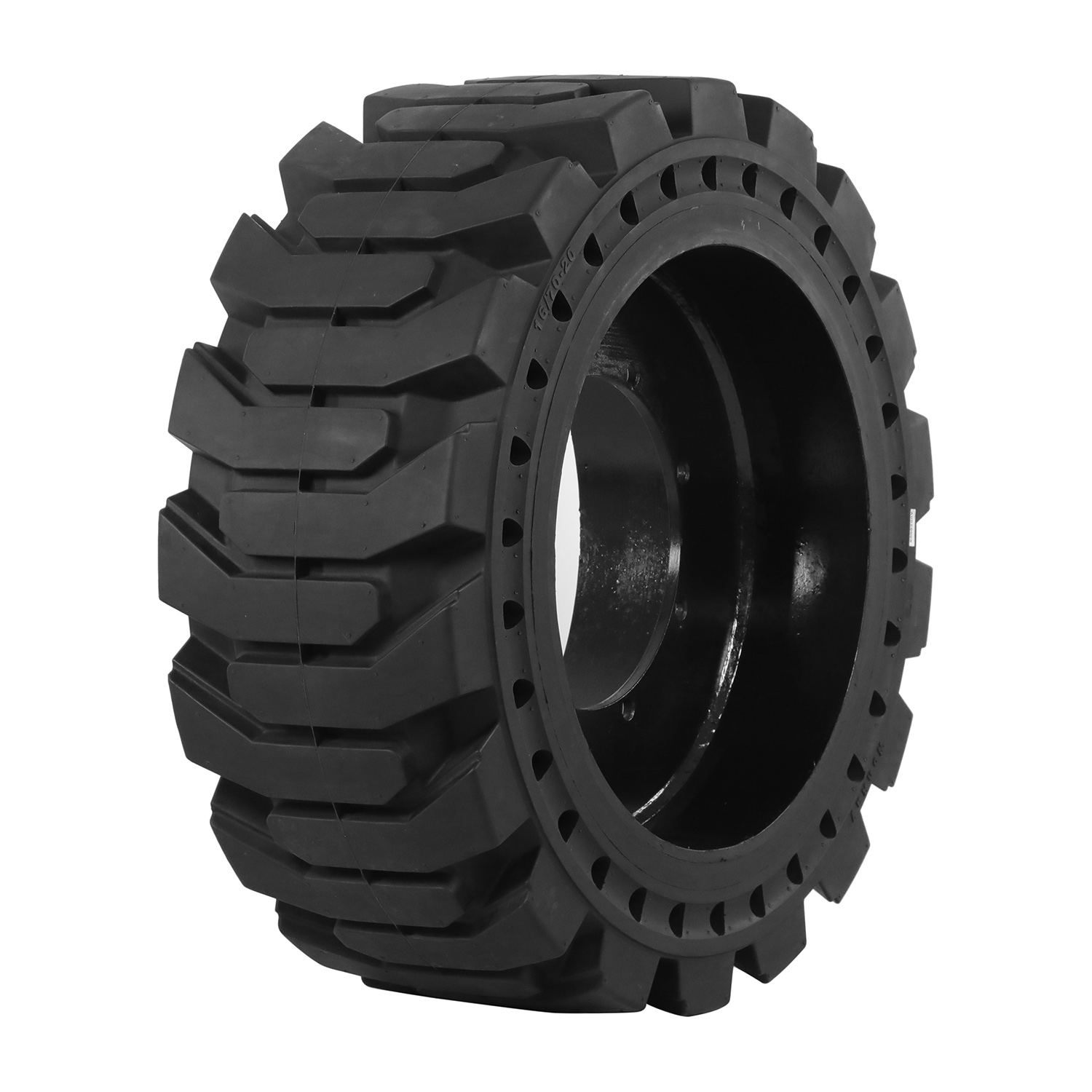Against the backdrop of accelerating global industrialization and urbanization, solid tires are gaining significant attention as a critical industrial component. Compared to traditional pneumatic tires, solid tires demonstrate immense potential across various applications due to their durability, safety, and low maintenance costs. In recent years, driven by continuous technological innovation and increasing environmental demands, the solid tire market has ushered in new growth opportunities.
Technological Innovation Enhances Solid Tire Performance
Solid tires were initially primarily used in industrial vehicles such as forklifts, hand trucks, and airport ground support equipment. However, advancements in material science and manufacturing processes have significantly improved the performance of solid tires. The application of new composite materials has led to breakthroughs in wear resistance, impact resistance, and load-bearing capacity. For example, some high-end solid tires now utilize polyurethane (PU) materials, which not only extend their lifespan but also enhance stability in harsh working environments.
Additionally, the introduction of smart tire technology has opened new possibilities for solid tires. By embedding sensors, solid tires can monitor temperature, pressure, and wear in real time, helping users better maintain and manage their equipment. This trend toward intelligence not only improves production efficiency but also reduces the risk of downtime caused by tire failures.
Environmental Demand Creates New Market Opportunities
As global emphasis on sustainable development grows, the demand for eco-friendly tires is increasing. Solid tires, which require no inflation and are less prone to blowouts, reduce tire waste and align with green manufacturing principles. Particularly in industries with stringent environmental requirements, such as logistics, warehousing, and manufacturing, solid tires are increasingly becoming the preferred alternative to traditional pneumatic tires.
Meanwhile, the challenge of disposing of used tires has also spurred demand for solid tires. At the end of their lifecycle, pneumatic tires often face recycling and disposal difficulties, whereas solid tires, with their higher recyclability, better meet the requirements of a circular economy. Some tire manufacturers have begun exploring ways to reprocess used solid tires into new tires or other rubber products, further reducing environmental burdens.
Expanding Applications Across Industries
Beyond traditional industrial vehicles, solid tires are expanding into more industries. For instance, in the agricultural machinery sector, solid tires are increasingly used in tractors, harvesters, and other equipment due to their wear resistance and puncture-proof properties. In the construction industry, solid tires are widely adopted in heavy equipment like bulldozers and road rollers, improving operational efficiency on complex terrains.
Moreover, with the rapid development of electric vehicles and autonomous driving technology, solid tires are finding growing applications in emerging fields such as electric forklifts and automated guided vehicles (AGVs). These devices demand high stability and durability from tires, qualities that solid tires are well-suited to provide.
Broad Market Prospects with Lingering Challenges
According to market research, the global solid tire market is expected to maintain steady growth in the coming years, with projections estimating the market size to reach billions of dollars by 2030. The Asia-Pacific region, particularly China and India, will likely experience the fastest demand growth due to accelerated industrialization and ongoing infrastructure development.
However, the solid tire market also faces challenges. First, the higher initial cost of solid tires may pose financial pressure for some small and medium-sized enterprises. Second, although solid tires excel in durability, their heavier weight may impact vehicle fuel efficiency or battery range. Therefore, striking a balance between performance and cost will be a key challenge for solid tire manufacturers in the future.
Conclusion
In summary, the solid tire market is seizing new growth opportunities driven by technological innovation and environmental demands. With expanding applications and increasing market demand, solid tires are poised to become a significant segment of the industrial tire market. However, manufacturers must continue investing in material research, cost control, and smart applications to address market competition and technological challenges.
Post time: 19-02-2025

